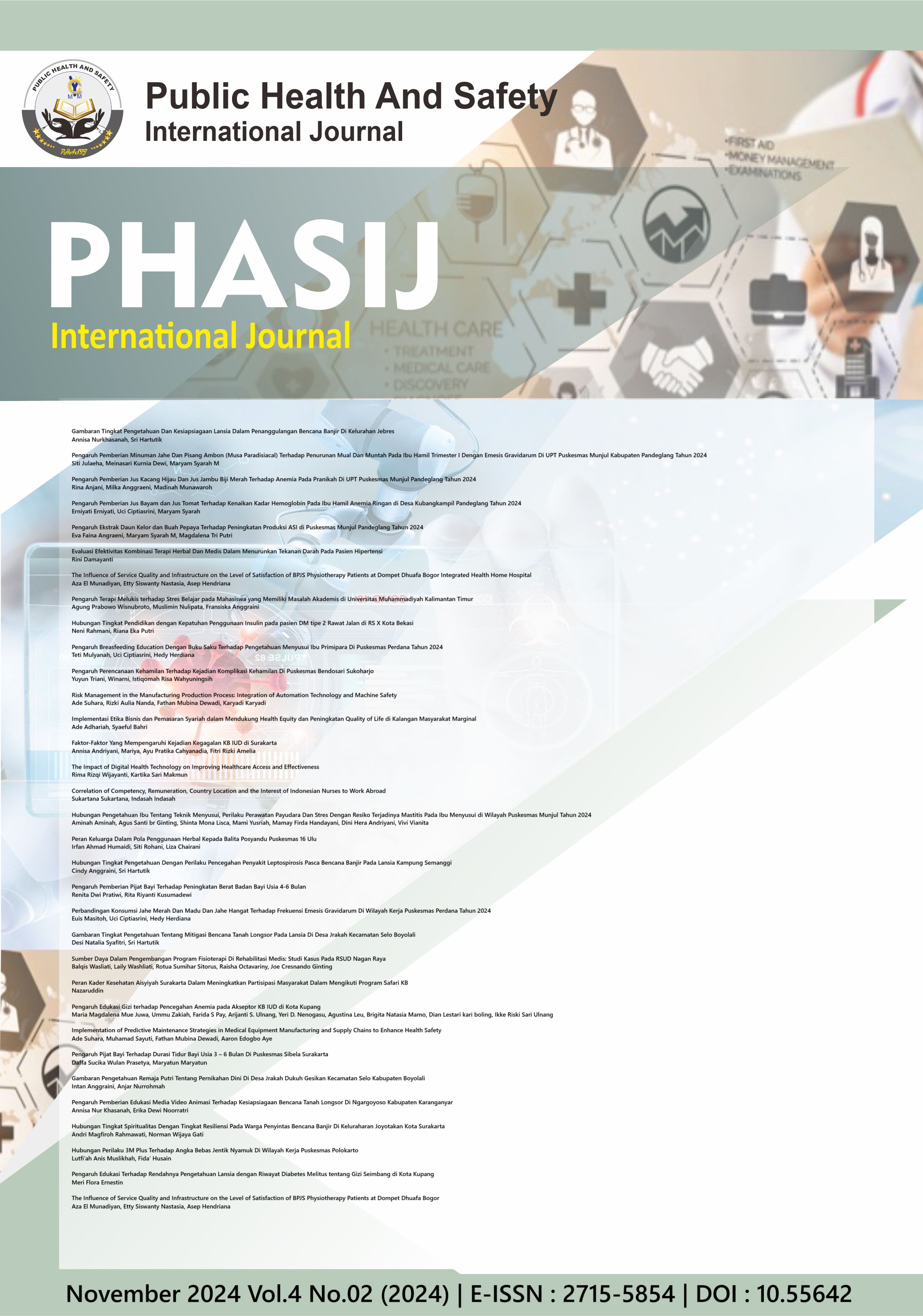Measuring Pharmaceutical Supply Performance at the Facility Level: A Standards-Aligned Study
DOI:
https://doi.org/10.55642/phasij.v4i02.1121Keywords:
pharmaceutical inventory management; medical supplies; pharmacy installation; performance evaluation; pharmaceutical logistics.Abstract
Reliable management of medicines and medical supplies is a prerequisite for high-quality pharmacy services. This study evaluates the performance of a Pharmacy Installation against national standards and identifies priority areas for improvement. We employed a descriptive–evaluative design using an assessment instrument aligned with the Directorate General of Pharmaceuticals and Medical Devices, Ministry of Health of the Republic of Indonesia (2017), covering two components: Resources (maximum 60) and Management (maximum 40). The results show a total score of 92.46/100, comprising Resources 56.06/60 and Management 36.40/40, classifying performance as compliant with the standard. Strengths are concentrated in operational processes (receipt, distribution, recording and reporting), while opportunities for improvement relate to data-driven planning, strengthening organisational/structural arrangements, and tightening inventory-control practices. Practical implications include implementing clear control parameters (e.g., reorder point and safety stock) and item-priority classifications (e.g., ABC–VED) to stabilise availability, reduce expiry risk, and improve cost efficiency. The study provides a comprehensive snapshot of compliance and a direction of continuous improvement for pharmacy installations.
References
Direktorat Jenderal Kefarmasian dan Alat Kesehatan Kementerian Kesehatan Republik Indonesia. (2017). [Dokumen pedoman standar penilaian manajemen pengelolaan obat dan perbekalan kesehatan].
Djoko, W., & Katu, S. (2016). Ilmu penyakit dalam Universitas Indonesia. Jakarta: Interna Publishing.
Guyton, A. C., & Hall, J. E. (2014). Guyton dan Hall buku ajar fisiologi kedokteran (Edisi ke-12). Singapura: Elsevier.
Ningrum, T., Indrayani, R., Ellyke, Marufi, I., Moelyaningrum, A., Hartanti, R., Pujiati, R., & Akbar, K. (2018). Kadar kolinesterase darah pada petani tembakau yang terpapar pestisida [Laporan penelitian]. Jember: Universitas Jember.
Pearce, E. C. (2006). Anatomi dan fisiologi untuk paramedis. Jakarta: Gramedia Pustaka Utama.
Purba, J. S. (2016). Ilmu penyakit dalam Universitas Indonesia. Jakarta: Interna Publishing.
Quezada, M. T. M., Lucero, V. P., Iglesias, M. P., Muñoz, C. A., Cornejo, E., Achu, B., Baumert, A., Hanchey, C., Concha, A. M., Brito, & Villalobos, M. (2016). Chronic exposure to organophosphate pesticides and neuropsychological functioning in farm workers: A review. International Journal of Occupational and Environmental Health, 22(1), 68–79.
Santana, M. L. R., Zúñiga, S., Corral, R., Sandoval, P. T. J., Scheepers, K. V. D., Velden, N., Roeleveld, & Pancetti. (2015). Assessing biomarkers and neuropsychological outcomes in rural populations exposed to organophosphate pesticides in Chile: Study design and protocol. BMC Public Health, 15, 116.
Yegambaram, M., Manivannan, B., Beach, T. G., & Halden, R. U. (2015). Role of environmental contaminants in the etiology of Alzheimer’s disease: A review. Current Alzheimer Research, 12(2), 116–146.
















